{note: I have the greatest respect for Tom Norman. The massive amount of work he did and information he collected–and even before the internet existed–is astounding. As far as I know, his work is only rivaled by the information Eric Boyd (of Mike and Me) has collected. My hat’s off to both of you.
While looking for a copy of an article from the Advocate called The Life and Hard Times of Legendary Porn Writer Phil Andros, I ran across a great paper written about his life. If you’re interested in his awesomeness–and you should be–you can read a LOT about him here. And I wasn’t able to find a copy of the Advocate article. All the links in this post open in another tab. TR}


Erotic literature has been around for centuries. There were erotic drawings on the walls of the caves inhabited by the first men. The ancient Greeks and Romans had it; the early Chinese and Japanese had it. The word pornography derives from the Greek. Monks in the Middle Ages produced pornography in their monasteries, but most of it was burned in public ceremonies during the Reformation. Bawdy writings during the Renaissance were soon to benefit from the birth of the printing press, but the Reformation and rise of Puritanism put a temporary stop to the spread of “scandalous” writings. Throughout history, however, there seems to have been a natural instinct for man to want some sort of written or visual erotica which could give him sexual stimulation.
Printed erotic literature specifically for English-speaking gay males had a start in Victorian England for wealthy subscribers to limited private printings, and then somewhat later for Anglo-American visitors to Paris before and after World War II. For most American gay readers, however, the literature really only flowered during a two decade period beginning in the mid-1960s. It was at a time that America was starting to drop its earlier ideas of what constituted hardcore pornography and to allow sexual expression to take forms that had heretofore been forbidden, beginning first with heterosexual literature.
In their landmark book, Pornography and the Law (Ballantine Books, 1959), Drs. Eberhard and Phyllis Kronhausen attempted to provide distinction between hardcore pornography and what was deemed “erotic realism.” According to the definition by J. W. Ehrlich in the foreword to their book, hardcore pornography “is invariably concerned with presenting a wish-fulfillment fantasy.” Its “main purpose is to stimulate erotic response in the reader.” It presents “a steadily mounting excitation through the exclusive depiction of sexual acts arranged in a series according to the strength of the taboo-or psychological repression—which would deter the reader from performing those same acts himself.”
On the other hand, Ehrlich defined “erotic realism” as aiming “to show the sexual side of man’s nature in terms that are psychologically based in reality, and on a scale that allows room to explore the anti-erotic impulses and circumstances in even the most erotic situations.” In it, the “truthful description of the basic realities of life, as the individual experiences it, is of the essence.” Ehrlich’s definition applies primarily to the literature prior to the mid-1960s.
Over the years, however, the lines drawn between hardcore pornography and erotic realism have become less distinct. In fact, many books contain elements of both, serving to appease the standards of connoisseurs of each genre and helping to give each book at least some “redeeming social value.”
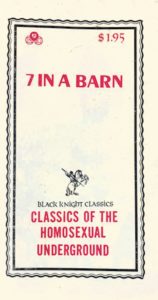 The earliest erotic literature aimed primarily at the gay male, usually quite amateurish, was mostly in typewritten or mimeographed form, and passed surreptitiously from person to person. Producers of the stories faced imprisonment and harrassment if they were caught. Rarely were the stories more than a few pages long, but even if they were of greater length, they were almost never printed and bound. One early such text, described by the Kronhausens, was the anonymous classic, Seven in a Barn (later expanded and printed by Guild Press in 1969 as a Black Knight Classic and used as the story line for one of the earliest explicit porno films in 1971). This 35-page book told the story of a poker game where the game master created all sorts of sexual penalties for the losers to perform.
The earliest erotic literature aimed primarily at the gay male, usually quite amateurish, was mostly in typewritten or mimeographed form, and passed surreptitiously from person to person. Producers of the stories faced imprisonment and harrassment if they were caught. Rarely were the stories more than a few pages long, but even if they were of greater length, they were almost never printed and bound. One early such text, described by the Kronhausens, was the anonymous classic, Seven in a Barn (later expanded and printed by Guild Press in 1969 as a Black Knight Classic and used as the story line for one of the earliest explicit porno films in 1971). This 35-page book told the story of a poker game where the game master created all sorts of sexual penalties for the losers to perform.
Often the literature had a decided sado-masochistic theme, and there was an emphasis on the genital sizes, the amount of semen ejaculated, the ability of the individuals involved to participate in numerous successive sex acts, the gorgeous appearance of the characters, the easy seduction of straights, the pyramidic progression from each sexual activity to one more involved, and often a finale consisting of a mass orgy.
Legal restraints for erotic literature were starting to fall by the late 1950s. One of the first such cases to receive wide publicity was when the U.S. District Court of the Southern District of New York declared that D. H. Lawrence’s Lady Chatterley’s Lover was not obscene. Courts found new ways to prosecute what they saw as obscenity. Ralph Ginsberg was sent to prison for his Eros magazine, because the court determined he was pandering in the way that he distributed and advertised his erotic publication. Supreme Court Justice Potter Stewart was stumped when asked for his definition of pornography, but he replied, “I know it when I see it.” Scholars rose up in defense of freedom of speech. Bertrand Russell wrote, “Even frank pornography would do less harm if it were open and unashamed than it does when it is rendered interesting by secrecy and stealth. Nine-tenths of the appeal of pornography is due to the indecent feelings concerning sex which moralists inculcate in the young: the other tenth is psychological, and will occur in one way or the other whatever the state of the law may be.”
Starting with the Roth decision by the Supreme Court in the mid-1960s, courts generally used the three-part rule that obscenity:
(1) had appeal to the prurient interest of the average man,
(2) was in violation of contemporary community standards, and
(3) was “utterly devoid of redeeming social value.”
The “community standards” were eventually recognized by the courts as meaning the U.S. as a whole, and they found that there was indeed a redeeming social value to even the most outlandish piece of pornography. In 1967 the Danish government removed all restrictions on what could be printed and read by anyone over sixteen years of age. One result of this was that sales of pornographic literature and art actually decreased, as did the number of sex crimes in Copenhagen. A decision of the U.S. Supreme Court on April 6, 1969, citing the first amendment, found that it was unconstitutional for the State of Georgia to prosecute a man for the mere possession of pornography in his own home. This landmark decision cleared up many questions in the minds of producers, sellers, and buyers of pornography, and the floodgates were opened. The Supreme Court’s definition of obscenity was further refined to say that community standards could be those of any or all communities, and the justices also added “literary and artistic” to their redeeming social value rule. One editor commented in the 1990s that really laws hadn’t changed, only the “vigilance of the vigilantes and their attempts to make a prosecution stick.”
The 1950s saw the birth of U.S. paperback originals aimed at gay males.
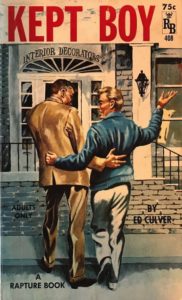 As the 1960s arrived, the number of gay male books multiplied. Ronn Marvin published his Mr. Ballerina (Regency) in 1960, and the anonymous All the Sad Young Men (Wisdom House) came out in 1962. Finally in 1963, Kozy Books put out what would be the first brazenly-packaged paperback originals aimed strictly at the gay male: the anonymous Male Bride and When Men Meet. International Publications put out Paul Wagman’s comparable Hollywood Homo. In 1964, some of the soon to be well-known gay writers and the publishers who would be associated with gay literature first came on the scene. Ed Culver’s Kept Boy was published by Publisher’s Export Co. in San Diego and Alexander Goodman’s Soft Spot was published by Guild Press in Washington, DC. (Goodman’s book was unlike a normal paperback—it was of a larger size [5 1/4 by 8 1/2 inches], stapled, and only 47 pages in length.) James Colton, a pseudonym of Joseph Hansen, wrote Lost on Twilight Road (National Library). The half dozen gay novels in 1964 were multiplied in 1965 when almost 30 appeared. From there the genre took off with leaps and bounds. With the demand for more and more gay literature, publishers and booksellers rushed to meet the need.
As the 1960s arrived, the number of gay male books multiplied. Ronn Marvin published his Mr. Ballerina (Regency) in 1960, and the anonymous All the Sad Young Men (Wisdom House) came out in 1962. Finally in 1963, Kozy Books put out what would be the first brazenly-packaged paperback originals aimed strictly at the gay male: the anonymous Male Bride and When Men Meet. International Publications put out Paul Wagman’s comparable Hollywood Homo. In 1964, some of the soon to be well-known gay writers and the publishers who would be associated with gay literature first came on the scene. Ed Culver’s Kept Boy was published by Publisher’s Export Co. in San Diego and Alexander Goodman’s Soft Spot was published by Guild Press in Washington, DC. (Goodman’s book was unlike a normal paperback—it was of a larger size [5 1/4 by 8 1/2 inches], stapled, and only 47 pages in length.) James Colton, a pseudonym of Joseph Hansen, wrote Lost on Twilight Road (National Library). The half dozen gay novels in 1964 were multiplied in 1965 when almost 30 appeared. From there the genre took off with leaps and bounds. With the demand for more and more gay literature, publishers and booksellers rushed to meet the need.
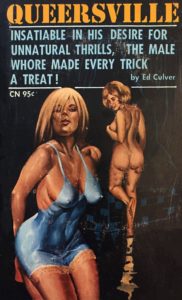 In 1965, publishers were still a little timid when it came to gay subjects. Private Edition Books in North Hollywood, California, released Eric DuVal’s Homo San that year, but the cover featured two young ladies, along with a blurb reading “a male virgin, he was manhandled in the twilight world where boys will be girls. It was a homosexual jungle filled with man-eaters.” Ed Culver’s Queersville from All Star Books depicted a scantily clad nude woman on the front cover and another photo of a woman on the back. Culver, along with other early writers such as Don Holliday, Marcus Miller, and J. X. Williams, also wrote many straight books. Some books, such as Mark Dunn’s Queer Guise and Dean Hudson’s Lavender Elves, featured cover art as well as a title that suggested gay contents to try to cater to the newly lucrative gay market, but the books were overwhelmingly straight, with only brief gay scenes.
In 1965, publishers were still a little timid when it came to gay subjects. Private Edition Books in North Hollywood, California, released Eric DuVal’s Homo San that year, but the cover featured two young ladies, along with a blurb reading “a male virgin, he was manhandled in the twilight world where boys will be girls. It was a homosexual jungle filled with man-eaters.” Ed Culver’s Queersville from All Star Books depicted a scantily clad nude woman on the front cover and another photo of a woman on the back. Culver, along with other early writers such as Don Holliday, Marcus Miller, and J. X. Williams, also wrote many straight books. Some books, such as Mark Dunn’s Queer Guise and Dean Hudson’s Lavender Elves, featured cover art as well as a title that suggested gay contents to try to cater to the newly lucrative gay market, but the books were overwhelmingly straight, with only brief gay scenes.
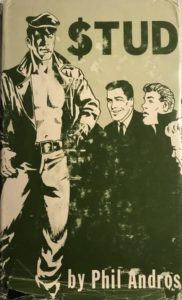 Guild Press in Washington, DC, was one of the first publishers to deal primarily with gay literature. Beginning with Alexander Goodman’s The Soft Spot in 1964, they published several dozen books not in series, plus a number in the Black Knight Classics, Lancelot, Tudor Classics, Twilight Classics, and Roadhouse Classics series over the next eight years. Many of the Guild books were by Goodman and J. J. Proferes, though the press also did a three-volume publication of Phil Andros’ $tud. Andros, under his real name, Samuel M. Steward, later wrote on “The Life and Hard Times of Legendary Porn Writer Phil Andros” in The Advocate (December 11, 1980). He mentioned that Guild Press by 1972 had run out of money and could not pay their binder.
Guild Press in Washington, DC, was one of the first publishers to deal primarily with gay literature. Beginning with Alexander Goodman’s The Soft Spot in 1964, they published several dozen books not in series, plus a number in the Black Knight Classics, Lancelot, Tudor Classics, Twilight Classics, and Roadhouse Classics series over the next eight years. Many of the Guild books were by Goodman and J. J. Proferes, though the press also did a three-volume publication of Phil Andros’ $tud. Andros, under his real name, Samuel M. Steward, later wrote on “The Life and Hard Times of Legendary Porn Writer Phil Andros” in The Advocate (December 11, 1980). He mentioned that Guild Press by 1972 had run out of money and could not pay their binder.
One way that the early publishers felt they could give some “redeeming social value” to their books was with a scholarly introduction. Beginning in 1969 with the Black Knight Classics, and up to two years later with its Roadhouse Classics, Guild Press included in the front of most of the books a 17-page essay entitled “The Meaning and Value of Homosexual Underground Literature.” With a book sometimes only 79 pages long, this essay thus constituted almost 22% of the text. The purpose of the introduction was “not meant to be didactic or ‘preach.’ Neither is it intended to be defensive of pornography or homosexuality. It is meant to show the humanity behind all pornography and to assert the essential goodness of this particular type of literature.” The essay defined pornographic literature as “literature that is intended to arouse sexual desire, to stimulate the sex instinct.” It traced the history of erotic literature up to the present, noting that pornography is again flourishing. It spoke of a “greater permissiveness and liberality toward erotic literature than ever before, but still great misunderstanding and persecution.” In other words, Guild Press defended the gay literature it was publishing as having definite social significance. It was not until the late 1980s, with its “AIDS Epidemic,” that a socially conscious publisher of the Adam’s Gay Reader series included in introductory material the following: “This is a work of fiction. The characters may engage in unsafe sexual practices. Readers, however, are advised by the current circumstances to enjoy our book but not imitate their activities.”
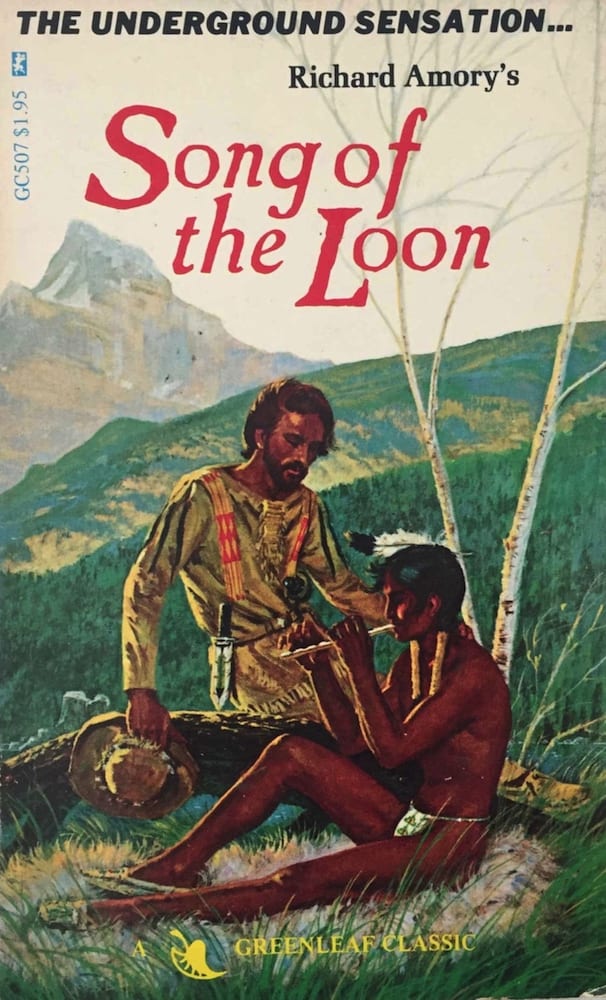 Adult bookstores started proliferating in the U.S. around 1966. The Advocate, one of the first real newspapers for gays, began publication in Los Angeles in 1967. In San Diego, California, a publisher named Greenleaf came on the scene in 1966. Greenleaf soon became the major gay paperback publisher with its Corinth Sundown Readers, Corinth Leisure Books, Greenleaf Classics, and the next year with its Greenleaf Ember Library, Corinth Nightstand Books, Adult Books, Phenix Companion Books, and Phenix Late-Hour Library. Greenleaf made its name most familiar in the gay market in 1966 with the publication of Richard Amory’s Song of the Loon, in its Greenleaf Classics series. That book was soon followed by two other of the same author’s titles to make a trilogy (and even a parody in the same series in 1968, Fruit of the Loon, by Ricardo Armory). It has been estimated that 30% of the gay male population in the U.S. purchased a copy of the first Amory book, which led to a popular 1970 porno film. Greenleaf began a series called Greenleaf Library in 1969 which consisted of oversized books with reversed covers. Because of probable small press runs, these books have always been scarce. Greenleafs final and largest gay series was the Phenix Pleasure Readers, starting in 1969, which changed its name in 1973 to Gay Novels.
Adult bookstores started proliferating in the U.S. around 1966. The Advocate, one of the first real newspapers for gays, began publication in Los Angeles in 1967. In San Diego, California, a publisher named Greenleaf came on the scene in 1966. Greenleaf soon became the major gay paperback publisher with its Corinth Sundown Readers, Corinth Leisure Books, Greenleaf Classics, and the next year with its Greenleaf Ember Library, Corinth Nightstand Books, Adult Books, Phenix Companion Books, and Phenix Late-Hour Library. Greenleaf made its name most familiar in the gay market in 1966 with the publication of Richard Amory’s Song of the Loon, in its Greenleaf Classics series. That book was soon followed by two other of the same author’s titles to make a trilogy (and even a parody in the same series in 1968, Fruit of the Loon, by Ricardo Armory). It has been estimated that 30% of the gay male population in the U.S. purchased a copy of the first Amory book, which led to a popular 1970 porno film. Greenleaf began a series called Greenleaf Library in 1969 which consisted of oversized books with reversed covers. Because of probable small press runs, these books have always been scarce. Greenleafs final and largest gay series was the Phenix Pleasure Readers, starting in 1969, which changed its name in 1973 to Gay Novels.
Meanwhile, the last half of the 1960s saw a score or more pornography publishers adding gay titles to their lines, and a few devoted all their efforts to the gay market. On the West Coast, Publisher’s Export Co. in San Diego was soon followed by the Brandon House, Barclay House, and Cameo Library series from North Hollywood. Echelon of Los Angeles published the Impact series, and Manifest Publications in Los Alamitos had several series. Even Las Vegas, Nevada, got in on the action with a couple of series from Neva Paperbacks. The East Coast had other publishers besides Guild Press: Lancer Books, Midwood Books, 101 Enterprises in New York with its totally gay series of small, stapled paperbacks, Timely, and Monkey Publications. The permissiveness of Denmark enabled its Svea series from Copenhagen to begin extensive distribution in the U.S. in 1968.
One publisher actually had its start in Paris in 1953, when Maurice Girodias founded his Olympia Press. Because of censorship laws in the U.S. which prevented authors from expressing themselves freely, Girodias arranged for the publication of many works that might have been lost forever. He prided himself in being the first to publish such authors as Vladimir Nabokov, Samuel Beckett, Henry Miller, William S. Burroughs, along with many other expatriate authors, as well as English translations of gay-oriented books by Cocteau and Genet. Many broad-minded readers in the U.S. managed to smuggle the Olympia Press books in their English-language editions into the country, until Olympia finally began publishing in the U.S. in 1967 after Girodias had been driven out of Paris by de Gaulle and when American obscenity laws were sufficiently relaxed. In announcing their Traveller’s Companion series in 1967, Olympia wrote that “the battle for free expression has been won. The freedom to write, to read, and to think is now accepted as one of the most authentic and valuable expressions of a true democracy.” Olympia’s series included a number of gay titles.
Most of the publishers of gay paperbacks from the late 1960s pulled their punches when describing the sex acts. They used euphemisms for the sex organs. A man did not have a cock or dick; it was referred to as his flesh or his member. But by 1970, however, sex acts were getting more graphic.
One of the major gay presses to come on the scene as the 1970s began was Surrey House in San Diego/Santee, California. Surrey began their HIS 69 series in 1971, and it would eventually run for twenty years, certainly a record in the field. Surrey’s early books were well-written, as well as outdoing Greenleaf in more explicit sex scenes. A 1975 HIS 69 book used hyperbola and double entendres in an introductory note, “If you haven’t discovered HIS 69 yet, you have something really big and delicious waiting for you, already raised to the highest possible point of penetrating excitement. Month after month, all the world over, nothing goes it more satisfactorily than HIS 69.” Because of the popularity of the books, in the 1970s, Surrey would often be publishing 20,000 copy press runs, and at one time was putting out a total 16 titles per month counting its various series. The competition from Surrey caused Greenleaf to rethink its strategy, and they actually closed down for two years until they could begin their Adonis Classics, a series that matched the style of books coming out of Surrey House. Greenleaf did not last as long as Surrey, but managed to continue in business until 1985.
Besides Surrey’s HIS 69 series, they also did a Manhard series from 1973-75 and 1978- 79, a Superstud series from 1975-76 and 1978-82, and a Blueboy series from 1976-77. A preface in a 1973 HIS 69 book described the new Manhard series as “a little rougher than his big brother [HIS 69], comes on strong and hard in leather and chains and the down and dirty.” The Blueboy series was notable because it returned to literate stories with a deemphasis of the sex content, an experiment that seemed to fail miserably. One critic has noted that these Blueboy books were leftover too-tame manuscripts that authors had written for the Pleasure Readers series from Greenleaf before that publisher decided that mild, tasteful stuff was losing out to raunchy Surrey titles which had to be imitated.
Bibliographers do have a bone to pick with Surrey House–that publisher could not decide what name/spelling to use. At first it was Surrey House, then Surree Ltd., then Surree House, then Suree Ltd., then Surey Books. Beginning in 1979, Star Distributors in New York took over distribution of the Surrey line. But as popularity waned in the late 1980s, press runs were down to only about 1,500 copies of each book.
Star Distributors, also sometimes known as Crown Publications, became the major publisher of gay porno on the East Coast. Operating out of New York, they began their first series, Spade Classics in 1972 and the Club series in 1973, and followed in 1974 with several series (Rough Trade, Proctor File, Back Door, Hardboy). Rough Trade continued for 16 years. Other long-running series from Star included Gaytimes Book Club (New Male), beginning in 1979, and Finland Books, beginning in 1980. Both of those series passed the decade mark. In the 1980s, Star began a number of series that catered to specialized interests as indicated by their titles–Gay Incest, Jock Studs, Macho Books, Combat Books, Young Stallions, Hung Studs, Big Boy, Buddy Books. In total, Star produced almost 30 series of exclusively gay titles, although they, along with Greenleaf, also published extensively in the heterosexual genre also.
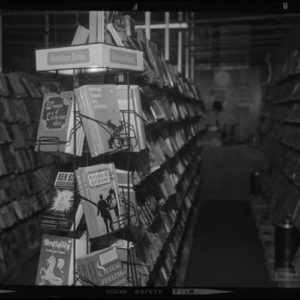
Samuel Steward recalls that in San Francisco the leading figure in gay publishing was the “Dirty Old Frenchman,” as he called himself, who ran Le Salon Bookstore and put out the Gay Parisian Press series in 1970-71 and the Parisian Press series in 1971-73.
For a dozen years beginning in 1969, Eros Publications in Wilmington, Delaware, produced some extensive gay paperback series—Frenchy’s Gay Line, Eros Goldstripe, Goldstripe Gay Series, Spartacus Books, and Guy Press. In a 1975 introduction to a Spartacus book, they wrote: “Spartacus Books is proud to present its series of homophile erotica designed especially for homosexual tastes-books that we hope will continue to reflect the scope, depth, and uncompromising erotic aspects of man’s love for man.”
Books from the 1970s usually had a definite story, with often great detail in establishing the locale of the action, and they were often quite well-written, though by the middle of the decade there was more and more emphasis on the sex scenes. Many publishers insisted that readers wanted instant gratification, so a certain percentage of pages had to be devoted to graphically described sex scenes. Samuel Steward recalls that Greenleaf returned Phil Andros’ The Greek Way to him in 1975, saying that there was only 36% sex in it, and they were now asking for 50%. To satisfy them, he did not add more sex scenes but simply amplified the ones already there.

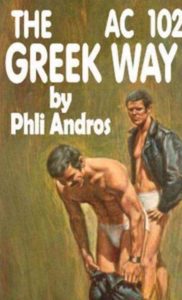 Steward tried in 1980 to come up with a reason for the decline in quality of erotic literature. He admitted that the porn writer “uses words and phrases that are emphatic and exaggerated and tries to appeal immediately to the sexual emotions,” but he complained about their trying to affect the reader by the use of four-letter words, “thus cutting away all chance for the imagination to be activated and to build up its powers.” He continued, “The ordinary porn writer seems to have hardly any imagination himself; he does not give the reader a map to direct his fantasies, but instead hauls him into a rubberneck sightseeing bus—and shouts to him through a megaphone what to look at and what to feel about it. Reading most modem porn is like reading graffiti on toilet walls: the designs and dirty words may be stimulating at first, but suppose you had to read every single line on a 10×40 wall all black with tiny writing.” He then concluded, “the porn writer is too devoted to cliches in such things as his descriptions of semen and the shrieks of the hero as ejaculation arrives. His phrases by constant use and misuse have been robbed of freshness and originality and—let’s face it—the power to stimulate.” Steward’s comments have been criticized by some as being “vain self back-patting on the superiority of his own writings.”
Steward tried in 1980 to come up with a reason for the decline in quality of erotic literature. He admitted that the porn writer “uses words and phrases that are emphatic and exaggerated and tries to appeal immediately to the sexual emotions,” but he complained about their trying to affect the reader by the use of four-letter words, “thus cutting away all chance for the imagination to be activated and to build up its powers.” He continued, “The ordinary porn writer seems to have hardly any imagination himself; he does not give the reader a map to direct his fantasies, but instead hauls him into a rubberneck sightseeing bus—and shouts to him through a megaphone what to look at and what to feel about it. Reading most modem porn is like reading graffiti on toilet walls: the designs and dirty words may be stimulating at first, but suppose you had to read every single line on a 10×40 wall all black with tiny writing.” He then concluded, “the porn writer is too devoted to cliches in such things as his descriptions of semen and the shrieks of the hero as ejaculation arrives. His phrases by constant use and misuse have been robbed of freshness and originality and—let’s face it—the power to stimulate.” Steward’s comments have been criticized by some as being “vain self back-patting on the superiority of his own writings.”
It was primarily Star in the 1980s that got away from the more relatively literate books of the past and started rushing out four titles a month in each series, and by the last half of the decade, they were putting out 7-9 different gay series in one year. The need for stories was so great that authors began cutting corners by using very short, often one sentence, and sometimes even one word, paragraphs. It made the books very difficult to read, but it filled up the pages.
Vincent Terry in his “A Survey of Erotic Gay Male S/M Books” in DungeonMaster wrote “Star books are apparently published with no proofreading from author’s manuscript to typesetter and none after the type is set in galleys. Characters’ names can and frequently do change from page to page and even from line to line. Star pages are frequently filled with typographical errors (in addition to spelling errors) which sometimes make absolute havoc out of the story. Sentences and whole paragraphs may be omitted so the plot (frequently negligible) loses what continuity it has, and the book may be incoherent with wild shifts and omissions.”
Reprints and pirating became much more frequent. The Manpower series from Arena Publications in North Hollywood, California, often indicated previous publication and used a sticker on the front cover stating “A reprint from the best of our previously published adult novels.” Other books in the same series had a different sticker which seemed to indicate that the publisher had lost track of the publishing history of the book: “A reprint from the best of our adult novels which may have been previously published under one or more titles.” Sometimes the copyright statement on the verso of the title page would detail the printing history, but more often there was no note, and authors and titles on unlabelled reprints were changed at will. It is hard to tell how much of this was simply a marketing decision on the part of the publisher who owned the story, or deliberate plagiarism of another publisher’s work by a publisher or the author who submitted the story. Samuel Steward was dismayed to find Phil Andros’ San Francisco Hustler (1970) pirated almost word for word only four years later by Cameo Library as Biff Thomas’ Gay in San Francisco, with only the character names changed, but including an ending from his manuscript that the original publisher excised.
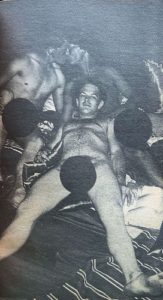
Some of the gay paperbacks were illustrated, with black and white or color photographs. A Pendulum book from 1969 featured photos of naked women on the front and back covers, but there were black and white photos of males inside. A 1970 Windsor House book had genitals overprinted with black circles in its photos, but later books from other publishers were more explicit, showing full frontal nudity but rarely sexual action. These illustrated books often had cover prices several dollars above the norm. The early Selbee and Unique series, and the Rough Trade and Proctor File series from Star were illustrated with black and white drawings. Almost all of the gay series had gay-themed photos or drawings to illustrate the front covers.
Authors of gay male paperbacks do not enter the field to become rich. The common payment for a gay book in 1966 was only $250, and after 25 years of inflation, that amount only negligibly increased. It is estimated that even Richard Amory made only about $2,500 for his fabulously successful Loon trilogy. According to Samuel Steward (Phil Andros), pornography makes no one but its publisher rich. He got only $250 for his first novel, but with a little bit of fame, he did get $400 each for three Andros novels published by Gay Parisian Press in 1970-71 and $800 from Greenleaf for Renegade Hustler in 1972. By 1990, even the publishers were not getting rich, and many of them were finding they could not make a go of it. Buyers, who had at one time found satisfaction with a paperback book, found they could get more stimilation from watching a rented hardcore video which they could put in their own VCR at home. And, there was growing competition from quality gay-themed paperbacks put out by major publishers.
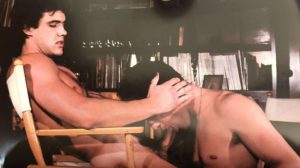
The cover prices of gay paperbacks had a steady rise from their introduction in the 1950s. Then, you could pick up a paperback for 35¢ and in the 1960s it went up to 60¢, 75¢, 95¢, $1.25, and $1.50. Guild Press and Brandon House introduced a $1.95 price in 1969, and that price was followed by Surrey House and Star up to 1974. That year saw a rise to $2.25. Star beat Surrey by two years to the $2.95 price in 1976, and then went to $3.95 in 1981. Greenleaf tried a $4.95 price with their Adonis Classics in 1985 just before they shut down, but the others did not follow suit and it was only in the 1990s that the $4.95 price became normal (Star went to $4.95 in 1992). Nova, with its color illustrations, set the record with a $7.95 cover price in the mid-1980s.
Shortly after Surrey House began publishing its HIS 69 series in 1971, a mail order business associated with it, operating under the name of Mama’s Mail Bag, later shortened to simply MMB, opened in the San Diego area to sell gay paperbacks. MMB for the next decade was one of the primary mail order sources for gay paperbacks and even got involved in the publishing of them. MMB finally went out of business in the Fall of 1992, after over a decade of monthly mailings to customers, when its mailing list had dwindled to about 500 names and the sources of new product had dried up. Greenleaf had a similar mail order outlet, known as Library Service, Inc., which operated for a number of years, selling both gay and straight paperbacks. Both these mail order houses offered discounts for multiple purchases, and occasionally had clearance sales. Star in New York offered its own paperbacks by mail order through ads in the backs of the books.
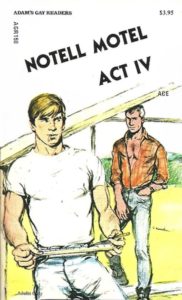
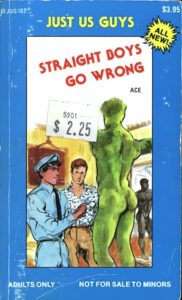
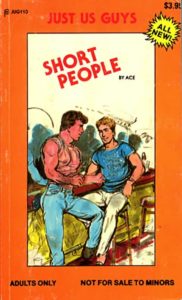 Something new hit the gay paperback field in 1985 when a college instructor from the Midwest contracted with MMB to edit the Adam’s Gay Readers (AGR) and HIS 69 series that were being published by Surey Books and distributed by Star. The instructor, known as Ace, had been writing for the books for a year or so before he took over. He noticed that the market for the books was diminishing as many adult bookstores were closing down, and fewer and fewer of the ones remaining were carrying paperback books. Younger consumers of erotica seemed to have shorter attention spans and were becoming more visually and video oriented.
Something new hit the gay paperback field in 1985 when a college instructor from the Midwest contracted with MMB to edit the Adam’s Gay Readers (AGR) and HIS 69 series that were being published by Surey Books and distributed by Star. The instructor, known as Ace, had been writing for the books for a year or so before he took over. He noticed that the market for the books was diminishing as many adult bookstores were closing down, and fewer and fewer of the ones remaining were carrying paperback books. Younger consumers of erotica seemed to have shorter attention spans and were becoming more visually and video oriented.
Sales of books were low and often half of them were unsold and returned by the distributor to the publisher for credit. (As an example, there were 1,500 copies of HIS69 645-648 published; 750 were returned.) Rather than return the entire book, booksellers were sometimes instructed to tear off the front cover and return it only, a practice which merely started a black market in front-coverless books saved from the trash. The size of most books dropped from 192 to 148 pages (plus 12 pages of front and back material) in order to save costs without raising prices and losing even more of the market.
Publishers were searching for ways to reduce typesetting costs, so Ace proposed his services as the equivalent of what is today known as a desk-top publisher. Ace deemed his books as “gay romances” and went to great efforts to work with a stable of some 24, later 35, authors. He encouraged them to make each of their succeeding books better and better. To help accomplish this, he began publishing a monthly newsletter for his authors called ACE Notes, which reviewed newly written books and provided suggestions to authors, such as listing euphemisms to avoid, recommending staying away from clinical or scientific terms, watching which “he is he” in the stories (a major problem when you are writing about only men), avoiding adverb and adjective overkill, etc. To prospective writers, he would send his “Erotic Fiction Standards” and then send detailed feedback on their outlines and eventual finished books. He wrote, “I realize the money isn’t much. The dreams of big audiences and riches are not available in this field, but if you want to be published and earn a little extra money, you’ll find us nice people to work for.”
Ace complained that the books from Star were different because they were actual pornography, more a “comic book” than a book, and Ace’s books were romances. Reality was still important to him. He wrote in ACE Notes that Star had five writers who turn out six books a week and they “burn out all the time, and so there are no names on their books.” One of those writers hated writing so much, he saved 30 pages of text in a book by utilizing two line paragraphs. Ace’s comment: “Hard to read, but he meets his deadlines. Arghhh.”
Star sent an author its rules in a September, 1988, letter: “We publish 8 books a week, every week—more than 400 a year. Most of the books are staff-written on computers. The computer diskette is then played into a type-setting unit which produces camera-ready pages for photo offset printing.” The letter mentioned that they also used freelancers, and required from them 29 line pages of 52 characters each. “Each chapter must have an explicit sex scene in the context of the story. Chapters can be any length, from 6 pages to more than 15 pages. A complete book consists of 150 pages. If you get a go-ahead and complete a book that is satisfactory, you will be paid $225 on acceptance. Star holds all rights.”
In the early 1980s, most publishers started the “over 18” rule in books, as law enforcement agencies throughout the country began a serious crackdown on child pornography. For awhile, the “true story” anthology magazines like First Hand continued to print under 18 stories, but by 1988, they too had succumbed to the over 18 rule as well. Ace was adamant that young men in his books be 18 or over. He wrote in ACE Notes, “all characters who participate in or observe erotic activity must be at least 18 years old.” He refused to accept high school settings anymore; the guys had to have graduated or be in junior college.
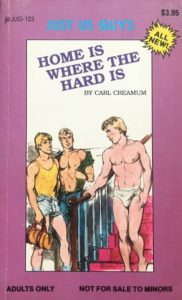 In 1988, Ace arranged for the start of the Just Us Guys (JUG) series, which was published by American Art Enterprises. Early the same year, Ace made plans to put a book summary and chapter titles at the beginning of each book, realizing that this was something that readers craved in making purchase decisions. A few months later, author Jon Hartley suggested to Ace that short summaries of other titles be published in the backs of the books to encourage further orders, a suggestion that Ace soon followed. He appealed to new writers by having a statement published in each book distributed by MMB: “Yes! I want to be published. If you’ve read enough of our HIS, AGR, and JUG books you already know what we’re looking for: Good stories that tell about how guys of various kinds interact. We try to avoid violence. We want people not just objects. Don’t expect big bucks. The press runs of these books are small and we don’t have a mass market to appeal to. But if you want to appeal to gay men with stories about their life styles, let us know.” MMB forwarded all the correspondence to Ace.
In 1988, Ace arranged for the start of the Just Us Guys (JUG) series, which was published by American Art Enterprises. Early the same year, Ace made plans to put a book summary and chapter titles at the beginning of each book, realizing that this was something that readers craved in making purchase decisions. A few months later, author Jon Hartley suggested to Ace that short summaries of other titles be published in the backs of the books to encourage further orders, a suggestion that Ace soon followed. He appealed to new writers by having a statement published in each book distributed by MMB: “Yes! I want to be published. If you’ve read enough of our HIS, AGR, and JUG books you already know what we’re looking for: Good stories that tell about how guys of various kinds interact. We try to avoid violence. We want people not just objects. Don’t expect big bucks. The press runs of these books are small and we don’t have a mass market to appeal to. But if you want to appeal to gay men with stories about their life styles, let us know.” MMB forwarded all the correspondence to Ace.
Ace continued using authors’ names on each book, even though many were obviously pseudonyms, because readers liked the practice. One reader wrote, “Each man has his style, his types of characters and situations, and is usually consistent—you can order a book by Josh Benton, or Clay Caldwell, etc., and know what to expect.” Ace advised his writers, “pick a nice name that pleases you. Look at our current list so you avoid using someone else’s name. You can use your real name, of course, or several pen names.”
One bibliographer came up with a listing of what he felt were pseudonyms that the same authors had used in the past
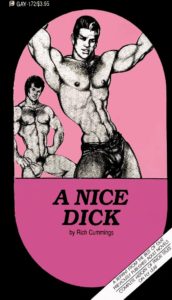 (l) Jason Forbes/Rich Cummings/Samuel West (books featuring teenage hick lads as heroes)
(l) Jason Forbes/Rich Cummings/Samuel West (books featuring teenage hick lads as heroes)
(2) Christopher Ford/Lance Rogers/Rick Tulane/Dal Temple/Daryl White/Tag Everts/S.P Lunker
(3) Alan Fair/Marcus Miller/Bob Cochran/Sam Dodd
(4) J.X. Williams/Don Holliday/Victor Jay/Jay Vickery/Abel Cruze/a few Bob Cochrans/Jay Symon/J.C. Alpert
(5) Carl Corley/Dennis Drew, and
(6) F.W. Love/John Ironstone/Jack Stone. Another writer equates Clay Caldwell with Thumper Johnson, and Tom Hardy with Tom Raines (and possibly Michael Scott).
Ace arranged for the printers of the books to publish a reader’s survey, offering original cover art as a prize for those who filled it out. By 1991, he had received 355 replies from readers, and they detailed their subject preferences of stories in the following order: awakening books, college boys, jocks, working men, family, between generations, and white collar men. Because he felt that S&M had a very limited, though avid, audience, it was not even included on the survey. He also omitted historical novels, mysteries, spy stories, and corporate intrigue because he felt they did not sell well enough. Soon MMB was labelling all of the books on its order blanks with Ace’s subject classification, i.e. A (awakening), C (college), or J (jock), and some of the books headlined the classification on the front covers.
The handwriting was on the wall for the gay book publishers. Ace saw that soon there would not be any publishers buying the output of his writers. American Art Enterprises, which had been printing several of the series, ceased printing any new books in August of 1991, and went strickly to reprints. One source for those reprints was MMB, which offered the printer several hundred titles primarily from the HIS 69 series in the 1970s for reprinting purposes.
Star also ceased publishing new books, and began negotiating to publish reprints. Ace figured that with a reprint Star saved $250 author’s fees, $150 typesetting costs, and $100 on cover art fees, or about 33¢ in production costs per book, the difference between losing money and making a profit.
MMB suggested to Ace that he find a “fairy godmother” who would be willing to lose money to promote gay explicit literature, a nice but impractical solution. A year before MMB went out of business, Ace severed its affiliation with them, and eventually, with the aid of some of his writers, embarked on a new enterprise. He decided to start a writers’ cooperative and put out computer-printed books himself, selling them by mail order exclusively. When the publishers went out of the new book business, Ace was stuck with fourteen books that had been written but not shipped. Several of these books were donated by their authors to the cause, and Ace, now in retirement in a small California community, bought the equipment and proceeded to put out his first series, known as Adam, in June, 1992. MMB’s owner kindly supplied his mailing list. The books were a new format—8 ½ by 7 inches in size and only 48 pages (though the equivalent in text to a normal-sized paperback). The covers were simply cut manila folders with a white label affixed. The format and amateurish presentation harkened back to some of the earliest gay fiction-history had come full circle. Whether Ace and his authors will succeed with their writers’ cooperative, called GWG Limited Editions, remains to be seen. Perhaps it is only a last ditch effort to save a dying genre.
Gay paperback fiction has seen its heyday. Today’s society is faster paced. We search for quick information in “sound bites” on the television news. Libraries are cutting hours or even shutting down as governmental bureaucrats give them lowest priority when dwindling tax dollars are needed elsewhere. But those gay men who came of age in the 1960s and 1970s will continue to remember fondly the literature they could call their own that suddenly appeared in bookstores. In future years, historians of the gay lifestyle should look kindly on that period of growth and then decline of gay paperback fiction, a significant plateau in gay history and the acceptance of an alternative way of life.
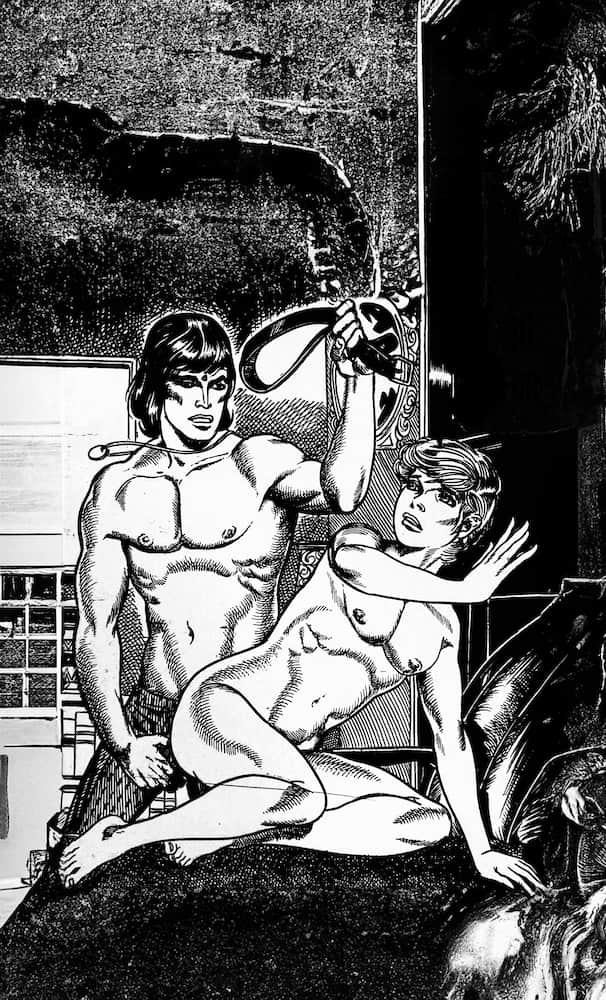
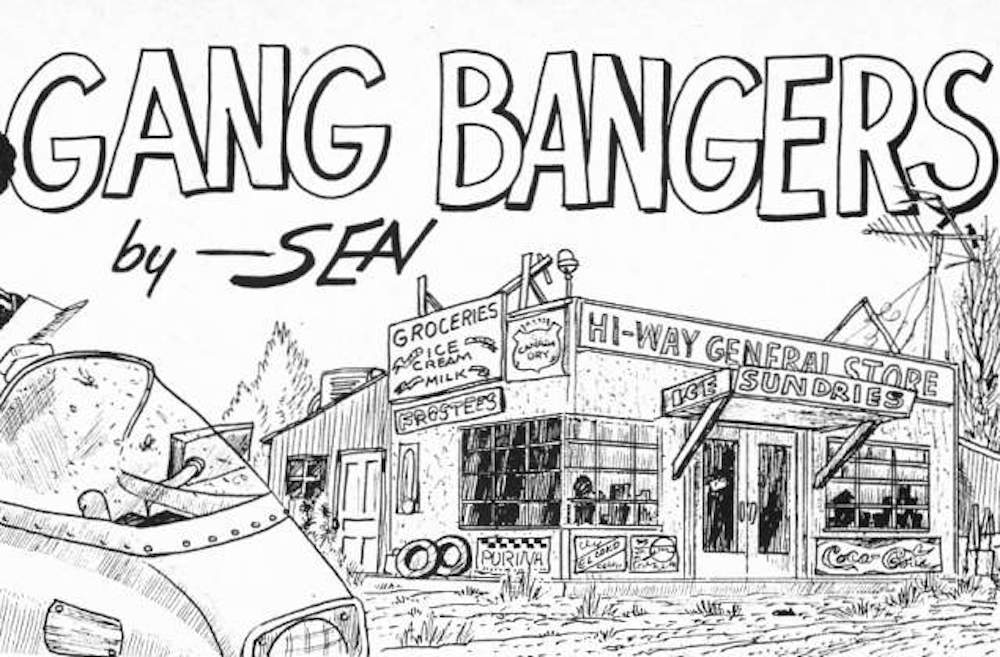
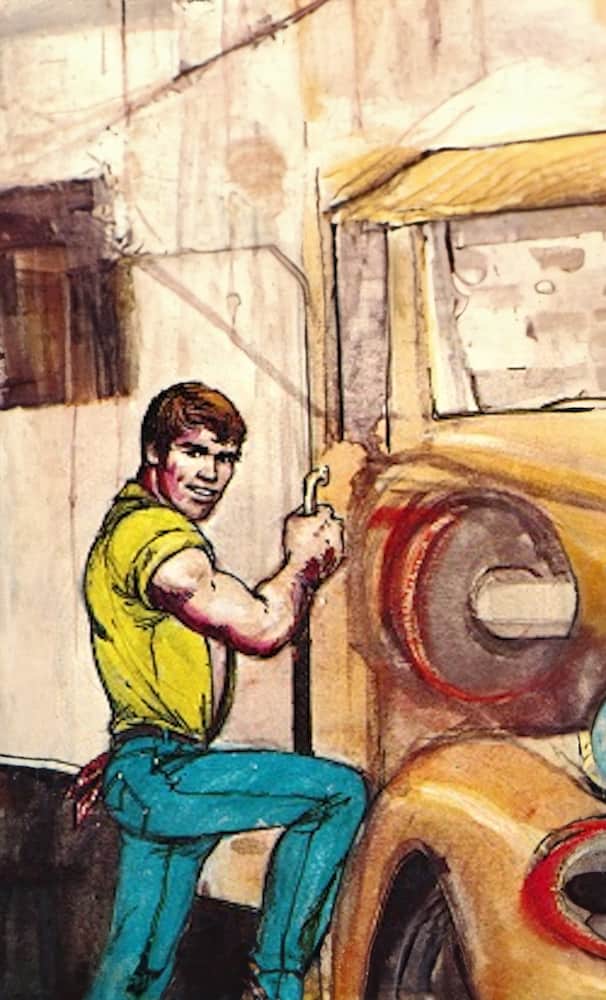

4 Responses
Thank you for posting this. I’ve been collecting for a number of years now but once again you’ve shown that there is so much more to learn and so many more books to add to the wishlist!!
Thank you for “Samuel Steward and the Pursuit of the Erotic.” I’m a big fan of the Phil Andros books and this looks very interesting.
I am curious about your reference to Eric Boyd. Besides the 2 Mike books (very good BTW), where is “the information Eric Boyd has collected” ?
Did Eric Boyd write a book or a series of articles on gay erotica?
No, he hasn’t. As far as I know, the information he’s collected is just on his computer… with what he’s shared with me incorporated into the list on the site. He’s definitely an expert.
Thanks for posting that. It was really interesting. So many books to add to my wishlist!